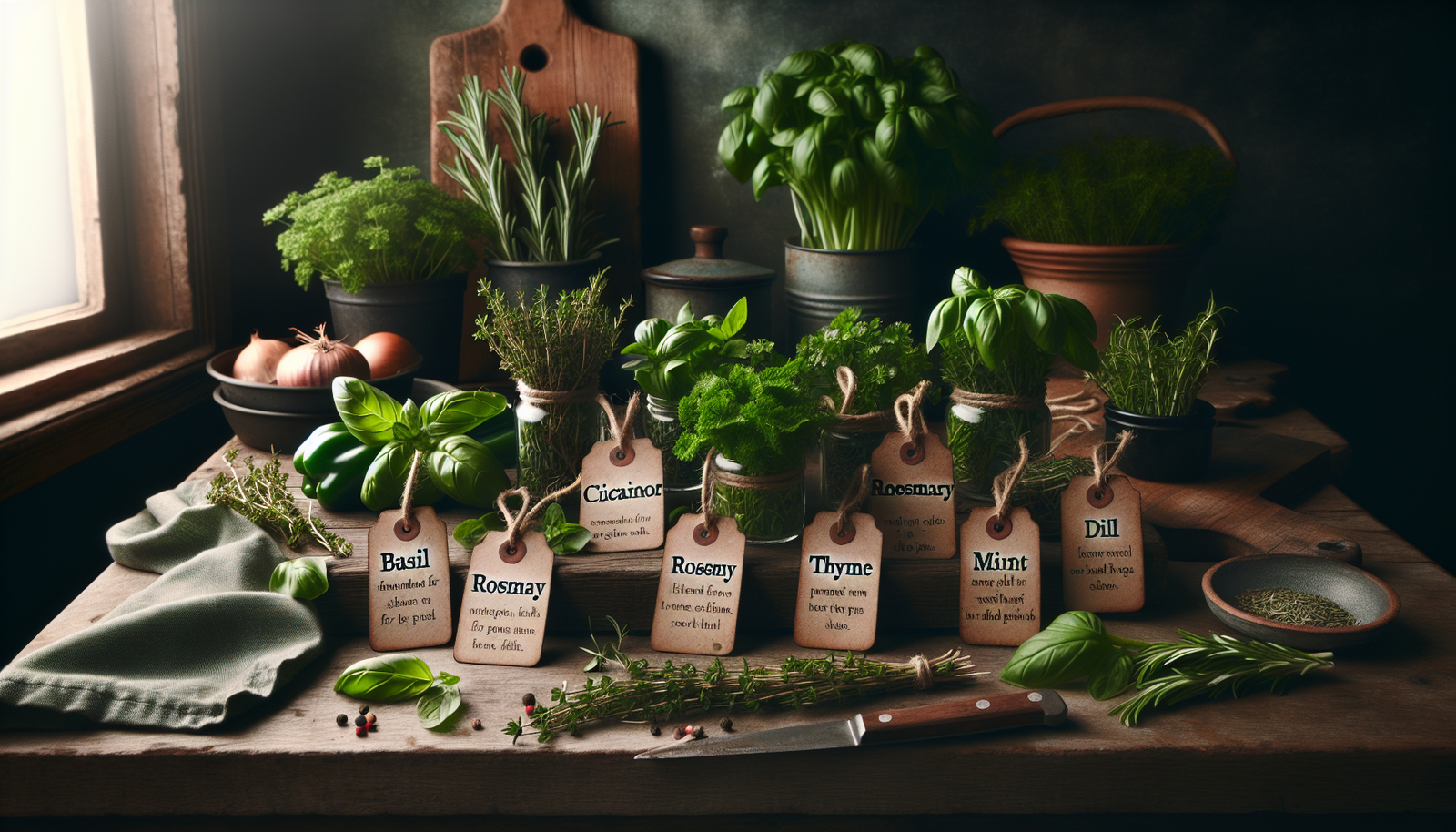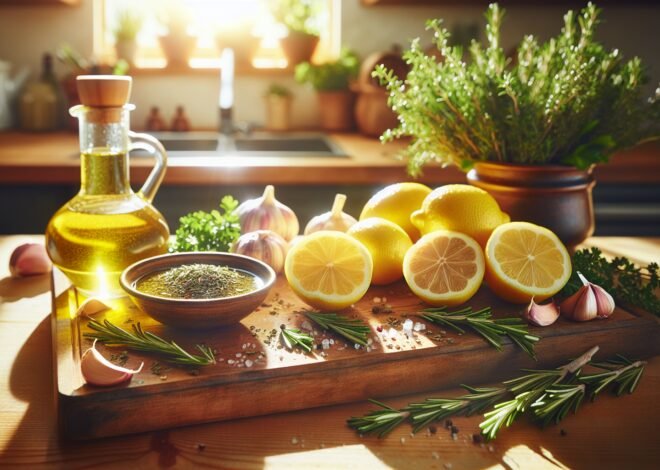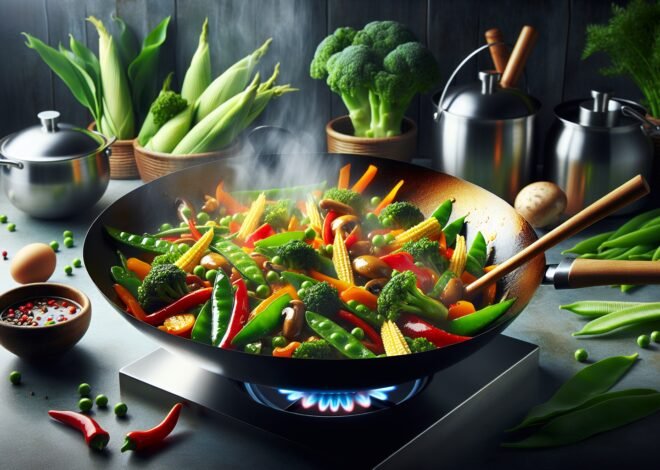
The Best Fresh Herbs for Different Types of Dishes
The best fresh herbs for cooking not only enhance flavor but also elevate the overall dining experience. From the aromatic allure of basil and cilantro to the subtle elegance of thyme and rosemary, each herb brings a unique touch to various dishes. Did you know that adding fresh herbs can increase antioxidant intake significantly? This post will guide you through selecting the right herbs for different cuisines, whether you’re creating a Mediterranean masterpiece, Asian delicacy, or classic French fare. Dive in to explore how these vibrant greens can transform your kitchen creations, making every meal memorable.
Best Fresh Herbs for Italian Dishes
Italian cuisine thrives on the robust flavors of fresh herbs. These aromatic gems not only enhance taste but also bring authenticity to every dish. Whether you’re crafting a simple pasta or a complex risotto, the right herb can make all the difference.
Fresh Basil for Authentic Italian Flavor
Basil is the cornerstone of many Italian recipes, offering a sweet, peppery flavor that is unmistakable. This vibrant green herb is essential in dishes like Caprese salad, where it pairs harmoniously with fresh tomatoes and mozzarella. Basil’s aromatic quality also shines in pesto, a beloved Italian sauce made with crushed basil leaves, garlic, pine nuts, Parmesan cheese, and olive oil. When using basil, it’s best to tear the leaves by hand instead of cutting them, preserving their natural oils and flavors.
- Pasta Dishes: Sprinkle fresh basil over pasta for a burst of flavor.
- Pizzas: Add whole basil leaves to pizzas just before serving.
- Beverages: Infuse basil into cocktails for a refreshing twist.
Incorporating Fresh Oregano in Italian Recipes
Oregano is a staple in Italian cooking, celebrated for its earthy and slightly bitter taste. This herb is often used dried, but fresh oregano offers a more intense flavor that’s perfect for savory dishes. It’s a key ingredient in tomato sauces, enhancing their depth and complexity. Fresh oregano can also be used to season meats, particularly lamb and beef, bringing out their natural flavors.
- Tomato Sauces: Add fresh oregano to marinara for a deeper taste.
- Grilled Meats: Season lamb chops with oregano for an authentic touch.
- Vegetables: Mix oregano with olive oil and drizzle over roasted vegetables.
Culinary Uses of Fresh Rosemary in Italian Cooking
Rosemary, with its pine-like aroma, is a versatile herb in Italian cuisine. Its strong, woodsy flavor complements hearty dishes, making it a popular choice for slow-cooked meals. Fresh rosemary is commonly used in roasts, where it infuses meats with a fragrant and savory taste. This herb is also ideal for flavoring focaccia bread, giving it a distinctive Mediterranean flair.
- Roasts: Insert rosemary sprigs into lamb or beef for aromatic roasts.
- Breads: Add rosemary to focaccia dough for a flavorful twist.
- Soups and Stews: Enhance soups with fresh rosemary for added depth.
Top Fresh Herbs for Mediterranean Cooking
Mediterranean cuisine is known for its use of fresh, vibrant herbs that bring dishes to life. These herbs add layers of flavor and are integral to the region’s cooking methods. From salads to stews, the right herb can elevate a dish from ordinary to extraordinary.
Fresh Parsley to Elevate Mediterranean Cuisine
Parsley is more than just a garnish; it’s a key player in Mediterranean cooking. This herb offers a mild, peppery flavor and a freshness that enhances a variety of dishes. Fresh parsley is often used in tabbouleh, a traditional Mediterranean salad that combines parsley with bulgur, tomatoes, and lemon juice. It also complements grilled meats and vegetables, adding brightness and color.
- Salads: Mix parsley into tabbouleh for a traditional taste.
- Meats: Sprinkle over grilled meats for added flavor.
- Dips: Blend parsley into hummus for a fresh twist.
Flavorful Uses of Fresh Thyme in Mediterranean Dishes
Thyme is cherished for its subtle lemony aroma and versatility in Mediterranean cooking. This herb pairs well with a variety of foods, from meats to vegetables. It’s especially popular in soups and stews, where its flavor infuses slowly during cooking. Fresh thyme is also perfect for seasoning roasted vegetables, adding an earthy taste that complements their natural sweetness.
- Stews: Simmer thyme in stews for a rich, aromatic flavor.
- Vegetables: Roast vegetables with thyme for a savory side.
- Seafood: Use thyme to season fish dishes for a zesty touch.
Enhancing Mediterranean Meals with Fresh Mint
Mint brings a refreshing and cool taste to Mediterranean dishes. This herb is widely used in salads, desserts, and drinks, offering a unique flavor that invigorates the palate. One of its most famous uses is in Greek tzatziki, a cucumber yogurt dip that combines mint with garlic and lemon. Mint also pairs well with lamb, giving the meat a surprising and delightful twist.
- Dips: Incorporate mint into tzatziki for a classic taste.
- Meats: Season lamb with mint for a refreshing flavor.
- Drinks: Add mint to iced tea or cocktails for freshness.
Essential Fresh Herbs for Asian Cuisine
Asian cooking showcases a variety of fresh herbs that enhance dishes with bold flavors and aromas. These herbs are crucial in creating the balance of tastes that Asian cuisine is known for. They add not just flavor, but also fragrance and color to a wide range of dishes.
Fresh Cilantro for Authentic Asian Flavor
Cilantro, also known as coriander leaves, is a staple in Asian kitchens. Its citrusy, slightly peppery taste is a defining characteristic in many Asian dishes. Fresh cilantro is often used in stir-fries, curries, and salads, enhancing their flavors with its distinct aroma. It’s also a common garnish that adds a pop of color and freshness to soups and noodle dishes.
- Stir-Fries: Add cilantro to stir-fries for an authentic taste.
- Curries: Mix cilantro into curries for enhanced flavor.
- Garnishes: Top soups with cilantro for a fresh finish.
Using Fresh Lemongrass in Asian Recipes
Lemongrass is a crucial herb in Asian cooking, known for its lemony aroma and flavor. This herb is typically used in soups, curries, and marinades, imparting a zesty and citrusy taste. It’s a primary ingredient in Thai tom yum soup, where it complements the spicy and sour flavors perfectly. When using lemongrass, it’s important to crush the stalks to release their oils, enhancing the dish’s flavor.
- Soups: Steep lemongrass in soups for a citrusy flavor.
- Curries: Add to curries for a fresh, aromatic touch.
- Marinades: Use lemongrass in marinades for meats and seafood.
Fresh Thai Basil and Its Role in Asian Cooking
Thai basil, distinct from sweet basil, is treasured for its anise-like flavor and aroma. This herb plays a significant role in Thai and Vietnamese cuisines, adding depth to both stir-fried and soup dishes. It’s often used in Thai green curry, where its unique taste complements the spiciness of the dish. Thai basil is also a key ingredient in Vietnamese pho, providing a fragrant finish.
- Curries: Add Thai basil to green curry for an authentic taste.
- Soups: Enhance pho with fresh Thai basil leaves.
- Stir-Fries: Use in stir-fries for a burst of flavor.
Conclusion
Fresh herbs can significantly enhance the flavor of various dishes. Basil is popular for its sweet and peppery taste, often used in Italian dishes. Cilantro is known for its bright, citrusy flavor, commonly found in Mexican and Asian cuisines. Parsley is versatile and can be used as a garnish or to add a fresh, slightly bitter taste. Rosemary has a strong, pine-like aroma, making it ideal for roasted meats and vegetables.
FAQ
What are the best fresh herbs to use for Italian cooking?
Basil, oregano, and rosemary are essential for Italian recipes. Basil adds a sweet and peppery flavor, perfect for pasta and sauces. Oregano is a staple for pizza and tomato-based dishes. Rosemary brings earthy notes to roasts and breads.
How can I store fresh herbs to maintain their flavor?
Wrap herbs in a damp paper towel and place them in a plastic bag in the fridge. This method keeps them fresh for up to a week. Alternatively, place stems in a glass of water, cover with a plastic bag, and refrigerate.
Which fresh herbs are ideal for enhancing Asian dishes?
Cilantro, Thai basil, and lemongrass are popular choices. Cilantro offers a citrusy note, perfect for soups and stir-fries. Thai basil provides a spicy-sweet flavor, while lemongrass adds a lemony aroma to curries and soups.
How do fresh herbs improve the taste of meals?
Fresh herbs elevate flavors, adding depth and aroma. They enhance the overall sensory experience, bringing freshness to dishes. Using them can transform a simple meal into something extraordinary.
What tips can help identify high-quality fresh herbs at the market?
Look for vibrant color and crisp leaves. Avoid herbs with brown spots or wilting. A fresh aroma is a good indicator of quality. Choosing herbs in season ensures the best flavor.
Are there specific fresh herbs recommended for beginners in cooking?
Parsley, basil, and chives are great for beginners. Parsley is versatile and adds color. Basil’s sweet flavor pairs well with many dishes. Chives provide a mild onion taste, ideal for garnishes.











